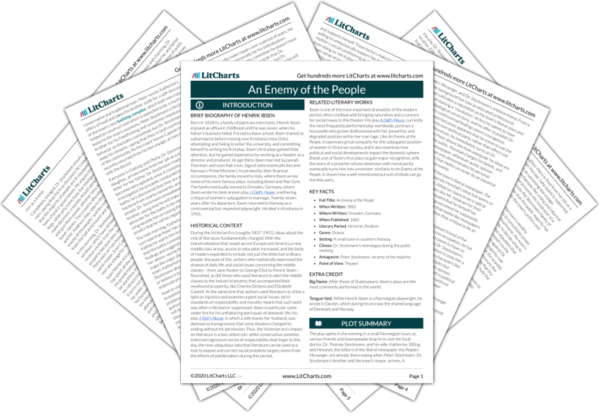Born in 1828 to a family of patrician merchants, Henrik Ibsen enjoyed an affluent childhood until he was seven, when his father’s business failed. Forced to leave school, Ibsen trained as a pharmacist before moving now Kristiania (now Oslo), attempting and failing to enter the university, and committing himself to writing his first play. Ibsen’s first plays gained little attention, but he gained experience by working at a theater as a director and producer. At age thirty Ibsen married Suzannah Thoresen and soon had a son, Sigurd (who eventually became Norway’s Prime Minister); frustrated by their financial circumstances, the family moved to Italy, where Ibsen wrote some of his more famous plays, including
Brand and
Peer Gynt. The family eventually moved to Dresden, Germany, where Ibsen wrote his best-known play,
A Doll's House, a withering critique of women’s subjugation in marriage. Twenty-seven years after his departure, Ibsen returned to Norway as a controversial but respected playwright. He died in Kristiania in 1906.
